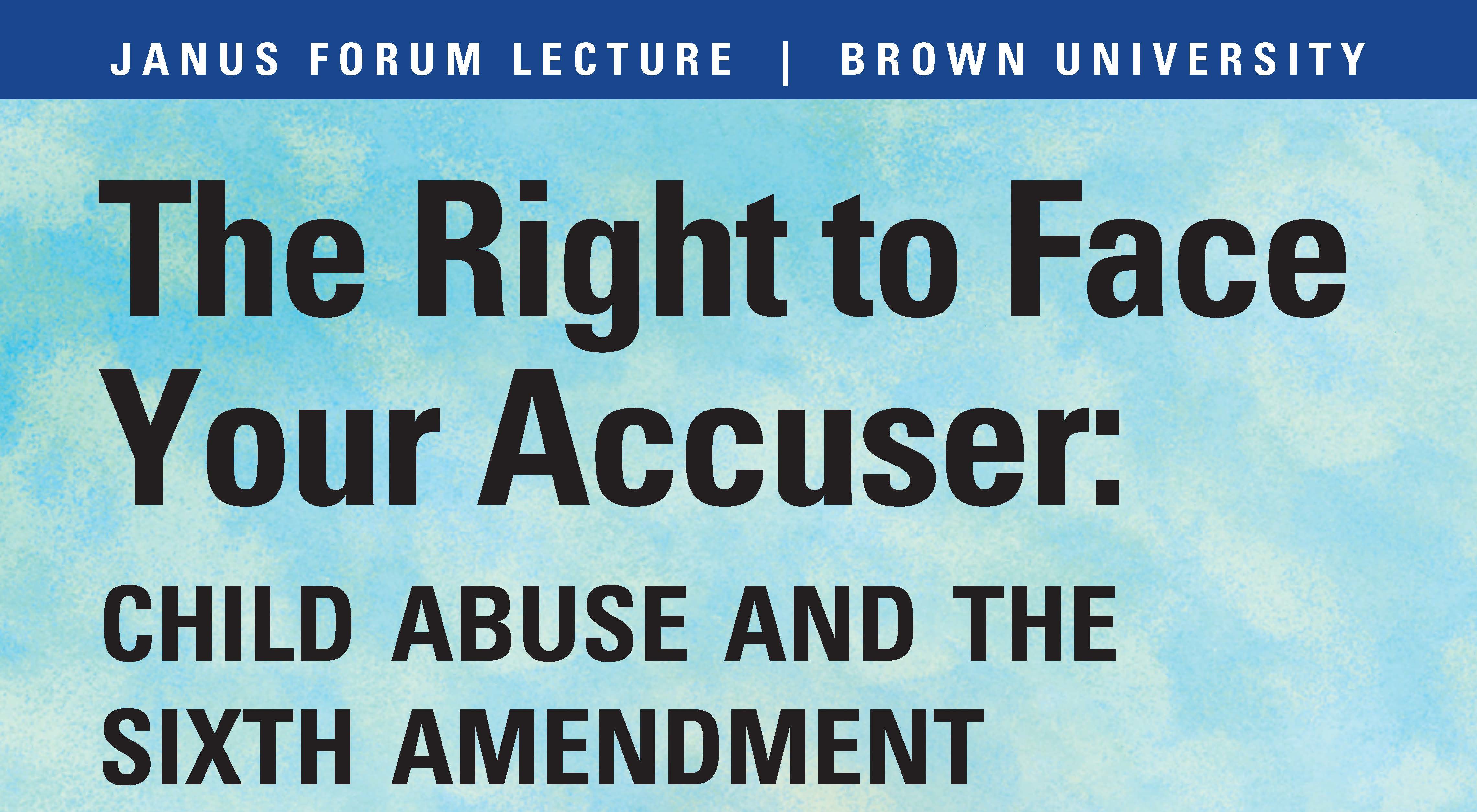This article was written in response to the Political Theory Project’s Constitution Day lecture on The Right to Face Your Accuser: Child Abuse and the Sixth Amendment.
Should courts treat a child’s testimony the same way they treat nonhuman evidence? It’s a cold and dehumanizing question at face value; treating one group’s testimony as different than another’s is an undeniable form of systematic discrimination. However, when it comes to child abuse cases, the question of how we treat a child’s testimony is a more tend question than one might think. You see, the Sixth Amendment requires witnesses — including potential victims of child abuse — to testify in front of the alleged perpetrator. In fact, under the Sixth Amendment’s Confrontation Clause, it’s the right of every defendant “to be confronted with the witnesses against him.” While the definitive efficacy of this “say-it-to-my-face!” justice has yet to be proven in cases involving adults, it’s increasingly clear that the modern interpretation of the Confrontation Clause muddles the legal process in cases involving a young child’s testimony. In cases involving testimony from children under eight, it may be more humane and practical to consider their testimony the way we consider nonhuman evidence.
During the past half century, the Supreme Court has been tightening its definition of the Constitution Clause to realign with its origins in Roman and English common law. In 1965, the Court decided that Confrontation Clause applied to local governments, not just the federal government. However, the Clause’s power as it applied to states was relatively weak for almost four decades with the Court allowing reliable, out-of-court statements or hearsay in Ohio v. Roberts. This meant that a witness did not need to be present in court to supply evidence. In 2004, the Roberts decision was overruled in Crawford v. Washington. In his 9-0 majority opinion, Justice Antonin Scalia stated that the Roberts decision “departed from the historical principles” of the Framer’s by giving hearsay and testimony the same analysis in court even though hearsay was admissible according to a malleable standard of reliability. In many cases, this tightening strengthens the rights of the accused often comes at little to no expense to witnesses’ rights and the legal process. Even in cases of child abuse, a child’s statements to a teacher or social worker about abuse are admissible under the Confrontation Clause, as clarified by Ohio v. Clark decision. The controversy arises regarding the cross-examination of that testimony – can you cross-examine a child’s testimony? And if you can’t, how is the defendant’s right to face the accuser met?
The issue of cross-examination with respect to children is mainly one of balancing the rights of the defendant with a practical legal process. Developmental child psychology has shown that children under the age of 8 to 10 often have difficult responding to questions in a cross-examination. For example, young children at a certain stage of cognitive development will reject the premise of hypothetical questions, leading to untrue testimony. This has led some to believe that the accused should be able to pick a licensed profession (e.g., a child psychologist) to cross-examine the child in a controlled situation outside of the courtroom. This psychologist could then testify in court the same way a forensic specialist would testify about fingerprints on a weapon. This process would wall off children — and victims of child abuse — from the legal process, but it also treats their testimony as nonhuman evidence, preventing the accused from directly confronting the child.
Many view this treatment of children’s testimony as a stripping of the right’s of the accused and to some extent it is. However, the Court still has a long way to go in clarifying how the Confrontation Clause applies to children. Between Roberts and Clark, it’s still unclear exactly who can collect evidence from children outside the court. And other models that could be even more beneficial to children, such as the child advocacy center model, which provides a controlled, videotaped environment for a young child to testify to a qualified professional, are effectively off the table as the court has still not explicitly allowed videotape hearsay — previously allowed by the logic in the Roberts — since the Crawford decision. Regardless of future Supreme Court decisions, it’s clear that “say-it-to-my-face!” justice does not work as effectively with children.
